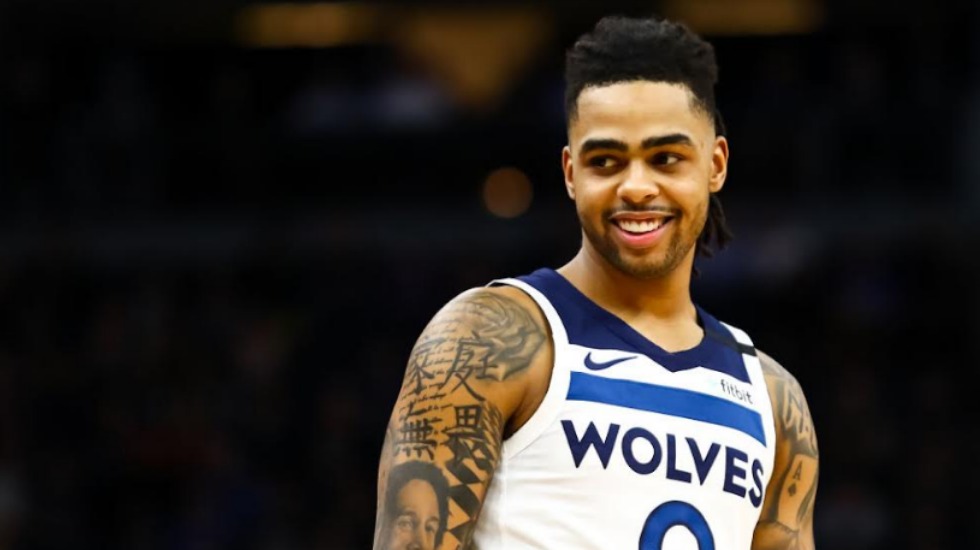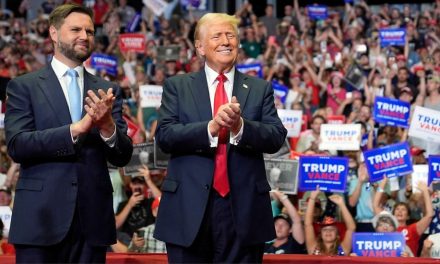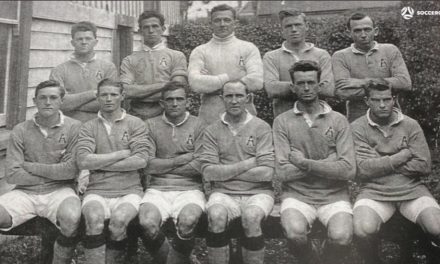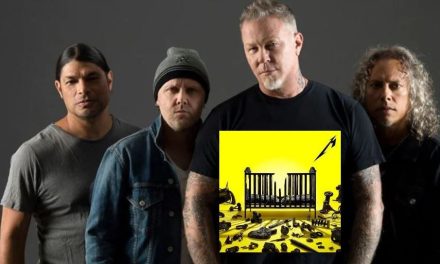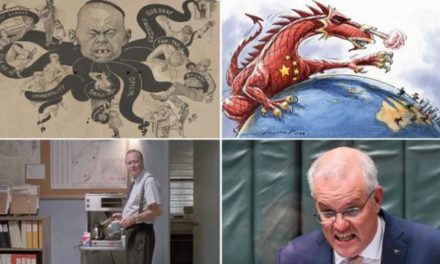D’Angelo Russell has adopted a senior role at Minnesota and thrived this season with career-high assists. Photo: Getty Images.
For the first time since perhaps the Kevin Garnett/Stephon Marbury era, the Minnesota Timberwolves are young, exciting and – just whisper it – good.
The Wolves have a talented and eminently likeable core of players who have their best years ahead of them, a brilliant coach and a new and dedicated ownership group (something ‘KG’ and ‘Starbury’ never had).
They’ve also proven that they can hang in a playoff setting, leading the Memphis Grizzlies by double digits in three of their four losses in the opening round.
Of course, a little bit of success is no guarantee that more will follow. How can Minnesota ensure its upward trajectory continues?
The roster
The Wolves coalesced beautifully in Chris Finch’s first full season at the helm, ranking in the top half of the league in both offensive (eighth) and defensive (13th) ratings, per Basketball Reference, for the first time since 2014. They were also the league’s best team in three-point makes and attempts, as well as points from turnovers.
With a young and athletic core (Patrick Beverley – himself a high-energy player, despite being 33 – is the only player key player on the roster older than 26), Finch played into his squad’s strengths.
A noted offensive innovator, Finch instead improved the Wolves’ defence in a major way, lifting them from 28th the season prior. He did that by imploring his team to use its length and athleticism to play aggressive defence, shoot passing lanes and dig for steals at every opportunity.
He also gained previously unseen defensive commitment from Karl-Anthony Towns and D’Angelo Russell.
Offensively, Finch encouraged his fringe players to push themselves. Jarred Vanderbilt was encouraged to get creative with his passing, Jaden McDaniels was told to try and take players off the dribble, despite a loose handle, and Taurean Prince was given a leadership role amongst the second unit. His players responded positively to Finch’s empowerment.
As far as personnel goes, the Wolves revolve around Towns, Russell and the electric Anthony Edwards.
‘Ant-Man’ projects as a legitimate superstar, both in his production on the court and his demeanour away from it. He’s a genuinely magnetic presence whose athletic gifts, attitude and work ethic make him the Wolves’ long-term talisman. How that sits with Towns remains to be seen.
Since being drafted first overall back in 2015, Towns has been the Wolves’ main man. As perhaps the best shooting big man in history (this writer still leans towards Dirk Nowitzki, but it’s a genuine contest), he’s a rare offensive weapon.
Defensively he puts up very good counting stats, but is far too often susceptible to a blow-by, an up fake and, frankly, the referee’s whistle.
The hope for the Wolves is that with the pressure of leading the team falling on the easy-going Edwards, Towns will find a happier place on the court.
Russell has, for the first time in his nomadic, yet still young, NBA career, found a home in Minnesota.
He’s clearly the third option for the Wolves and that seems to suit Russell just fine. He averaged a career-high 7.1 assists this past campaign, whilst still putting up 18.1 points despite a sub-par shooting season. He has adopted a senior role at the Wolves, despite still being just 26.
Around its stars Minnesota has a raft of solid young role players.
McDaniels is a stereotypical ‘three-and-D’ wing, playing excellent defence as his offensive game continues to expand, Vanderbilt is a demonic rebounder who almost seems offended when a teammate, let alone an opposition player, gets a rebound in his zone, Naz Reid is an athletic big full of promise and Prince takes little off the table.
The veteran of the crew, Beverley continues to be Beverley. His influence on Minnesota’s defence can’t be underestimated.
This team is building towards something. It’s only going to get better.
Team needs
A team on the rise, the Wolves, in a broader sense, simply needs to stay the course.
The team’s core is almost entirely under contract, and Finch has given the group a focus and direction.
The players seem to enjoy each other’s company – something that is somewhat of a rarity in Minnesota’s history – and with new ownership integrating itself, the Wolves are close to ridding themselves of their biggest competitive disadvantage.
Perhaps the only situation that the Wolves had left to resolve was is in the front office. For all of his, ahem, personal issues, Gersson Rosas did a fine job putting together this iteration of the Timberwolves.
Since Rosas’ sacking, Sachin Gupta has provided a steady presence but has been smart enough not to mess with the work of his predecessor. The team recently spent big to poach the highly-regarded Tim Connelly from Denver.
A new front office leader tends to want to put their stamp on their new team. Connelly would be wise to employ a little patience and humility, recognising the path that Rosas has set this team on. Connelly, of course, learnt at the feet of the respected Masai Ujiri before his brilliant work in leading Denver’s basketball operations. He’ll surely make the most of this.
PLEASE HELP US CONTINUE TO THRIVE BY BECOMING AN OFFICIAL FOOTYOLOGY PATRON. JUST CLICK THIS LINK.
The cap sheet
As mentioned, the Wolves have most of their rotation under contract, only Prince needing a new deal. Overall, the Timberwolves have 11 players inked for 2023 at a cost of $119 million.
Prince has become a key glue player and will likely be retained, though at something considerably less than the $15 million he was paid last season.
Their other notable free agents – Jake Layman and first-round bust Josh Okogie – are in a much more perilous position.
Okogie is a solid defensive player and just a reasonable jumper away from being a genuine rotation player. He’s still just 23 and may earn a low commitment ‘prove it’ type deal. Layman, though, is eminently replaceable.
Where the intrigue lies regarding the Wolves’ cap situation is their pending free agents. Minny has a potential seven players that could enter free agency at the end of next season.
McDaniels is likely to earn an extension in 12 months’ time that would take him off the market, as would Leandro Bolmaro, though at a much smaller figure than McDaniels.
Reid will surely be re-signed, as would Beverley on the assumption that he doesn’t fall off a cliff production-wise, which is a possibility given his age.
The two players to watch will be Russell and the sharpshooting Malik Beasley.
In the final year of his deal, Russell will earn $31 million. He surely won’t earn that type of dough on his next contract, with a figure somewhere in the $25 million range far more likely. Will that be with the Wolves, though? Towns and Edwards are the Wolves’ bedrock while Russell is seen by some as a replaceable luxury, especially given his defence is (despite marked improvement) somewhat poor.
Russell loves life in Minny, so expect him to stay if possible. This writer expects the club to let Russell play this season without a new deal. If his shooting rebounds and the team continues to improve, the Wolves will put a deal on the table.
If his shooting remains cold, his defence regresses and the team plateaus, look for Connelly to try to move Russell before the trade deadline.
Beasley was a key acquisition when brought in from Denver in a genuine Frankenstein’s Monster of a trade. Despite a good start in Minnesota, he’s found himself on the outer as the team has rightfully developed Edwards as their star two-guard.
On a contract that contains a team option for $16.5 million in 2024, Beasley is a major trade chip. He could be exactly the sort of player a rebuilding team needs to take control of its offence, or seen as a source of instant offence for a contender.
As much as Connelly (who drafted Beasley) is a fan of the shooter, he’ll likely be traded – the question is where to.
The draft
The Wolves, in another tip of the hat to Rosas, own their own first-rounder as well as three second-round picks in the upcoming draft.
At pick 19, Nikola Jovic would be the dream pick. The Serb would provide an offensive alternative to both Vanderbilt and McDaniels, his potential as a point forward unlocking Edwards’ and Russell’s abilities off ball.
On a team with the types of athletes that Minnesota possesses, as well as an elite ‘Xs and Os’ coach, Jovic’s outstanding basketball intelligence should be accentuated with his lack of high-end athleticism covered.
The Wolves could also go for the highest upside project in the draft in Ousmane Dieng. The young Frenchman is a similar player to a pre-draft Giannis Antetokounmpo at this stage of development.
Obviously, that’s not to say that he’s a future league MVP, but the skillsets and physical similarities are hard to ignore. Of course, there are far more Anthony Randolphs littered around the league’s wastelands than there are Giannises. Dieng is the very definition of high risk/high reward.
In the second round, the Wolves hold picks 40, 48 and 50. As it often is with second-round picks, look for home-run swings or stash picks. A big man like Ismael Kamagate, an uber-athletic wing like Payton Watson, or an international prospect like Italian Gabriele Procida could be in play.
To find more of Jarrod Prosser’s content visit vendettasportsmedia.com

